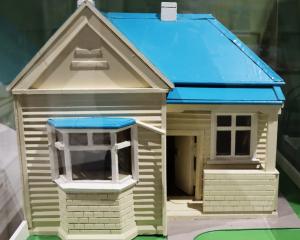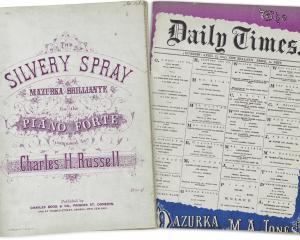
One of my favourite pieces — among many beautiful possibilities — in the textile collection Margery Blackman recently gave to Otago Museum, is the lengthy, patterned pack band woven by an anonymous Qashqa’i woman, which Mrs Blackman bought in Shiraz, early in 1976.
She, her husband Gary and their then teenage daughter Anna had booked a stopover in Iran as part of their fare from Dunedin to the UK, where Mr Blackman had study leave arranged.
Mrs Blackman remembers that they arrived in Teheran on January 6, then took an internal flight to Shiraz the next day. Planning for the trip the year before, they’d spoken to friends in Dunedin who had offered suggestions about what to see and where to go. Shiraz is one of the most famous and beautiful cities in Iran; the capital of Fars Province, in the south of the country. It has been a trade centre for more than a thousand years and Mrs Blackman describes her time there as "a whole new world of discovery".
One of the reasons the Blackmans chose to visit Shiraz, however, was because they were eager to see the World Heritage-listed archaeological site of Persepolis, the capital of the Achaemenid Empire, founded by Darius I in 518BCE. It is about 60km from the city; just a bus or taxi trip away.
After returning from Persepolis, they spent time in the Shiraz markets. Mrs Blackman remembers being offered the opportunity to buy a great number of very recently made pack bands before finding this older example for sale. Later, she wrote to her daughter, Janet, then a med student at the University of Otago, "we have made a few small purchases, the most interesting for me being 15ft of camel girth in Shiraz — blue and white double weave about ½ two and a-half inches wide — we all think very good."
Mr Blackman’s diary has a little more detail about the day: "After lunch (banana, oranges, nuts, Pepsicola and Persian bread) we followed an alley at the back of the hotel. The winding route took us between high walls and closed doors to the Citadel and Post Office. We decided to explore the Bazaar more seriously ... we were soon proud possessors of a very fine camel girth over 15 feet in length. Apart from some fine older rugs beyond our financial reach, we were not tempted by much else ... We explored further ... and came late in the afternoon to a beautiful old courtyard with a reflecting pool and orange trees complete with oranges. Craftsmen of various kinds were at work in small side shops."
The nomadic Qashqa’i traditionally travelled nearly 500km with their flocks each year from summer highland pastures north of Shiraz, to warmer winter pasture lands near the Persian Gulf. Edward Stack wrote of them in 1882, "like most of the Persian nomad tribes, they have their winter and summer quarters (qishlaq and ilaq); the latter are among the high mountains west of the Shiraz and Isfahan road, and are visited from the end of spring to the end of autumn."
Hand-woven warp-faced pack bands (the camel girth) were essential to all the nomadic pastoralists living in Iran. They were woven by women, on ground looms set up specially for their long narrow nature, and used to secure the loads of tents, food, clothing and bedding carried by their pack animals — camels, sometimes mules and donkeys, and for some groups, horses.
Mrs Blackman says she had read a little about them, but in the 1970s they were not very well-known or sought by most textile enthusiasts and collectors, especially compared with the celebrated carpets woven in the Fars region, which are now on the Representative List of the Intangible Cultural Heritage of Humanity.
The band is on display in "It’s All in the Making: the Margery Blackman Textile Collection" in the Museum’s People of the World gallery. It is blue and white — indigo-dyed with designs showing in undyed white or cream wool. Occasional tufts of red, pink, orange, green or light blue coloured wool have been added at points. The stylised designs include people, four-legged animals, and geometric forms. There’s a flat blue and white braid at one end, nearly as wide as the band itself, with red V-shaped lines. The warp threads — running lengthwise — are packed tightly for strength, and it would have had a buckle for fastening — either carved from wood or a forged D-shape metal buckle.
Today, many Qashqa’i have settled in the urban centres that have started expanding into the lands they used for grazing. The pack band Mrs Blackman bought nearly half a century ago seems to encapsulate both the traditional Qashqa’i lifestyle and the changing world that has impacted it.
Moira White is curator, humanities at Otago Museum.





![‘‘Neil’s Dandelion Coffee’’. [1910s-1930s?]. EPH-0179-HD-A/167, EPHEMERA COLLECTION, HOCKEN...](https://www.odt.co.nz/sites/default/files/styles/odt_landscape_small_related_stories/public/slideshow/node-3436487/2025/09/neils_dandelion_coffee.jpg?itok=fL42xLQ3)






